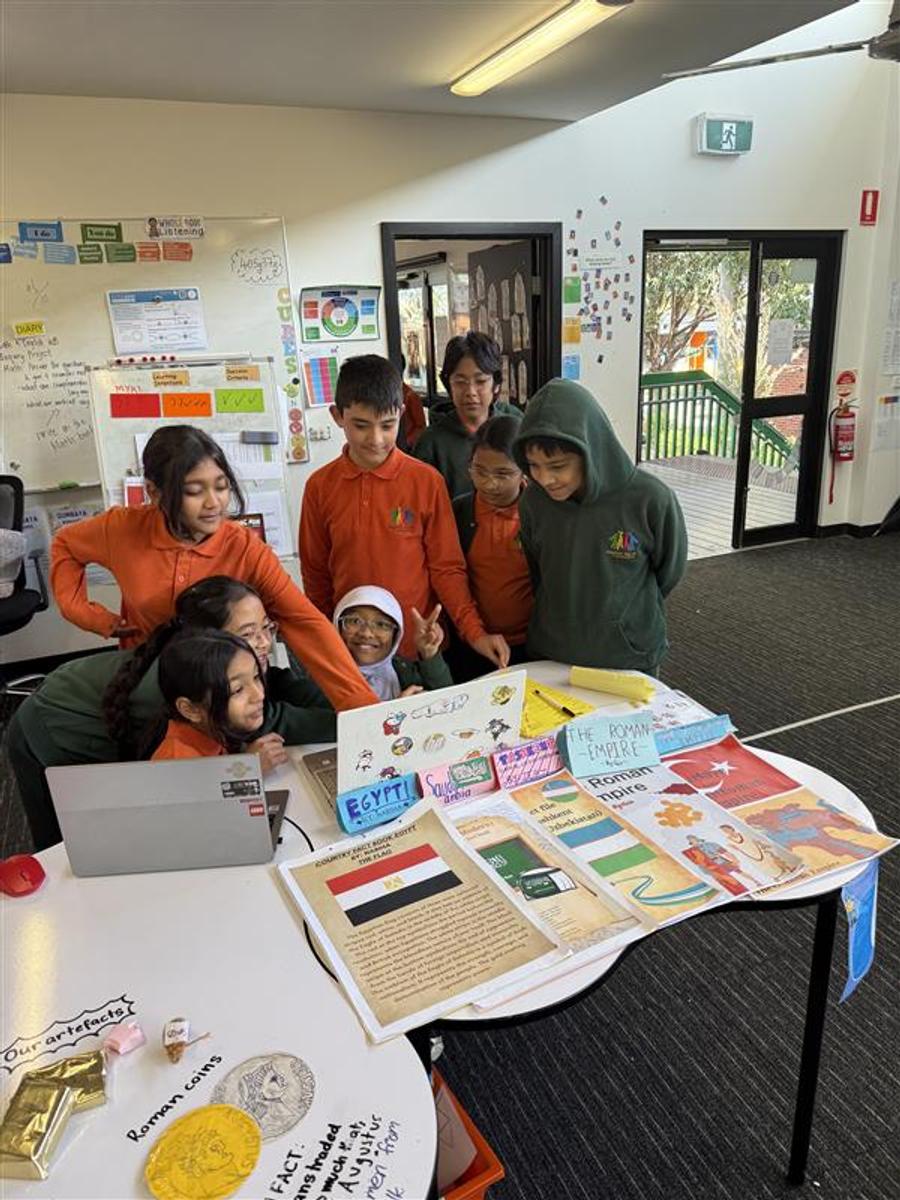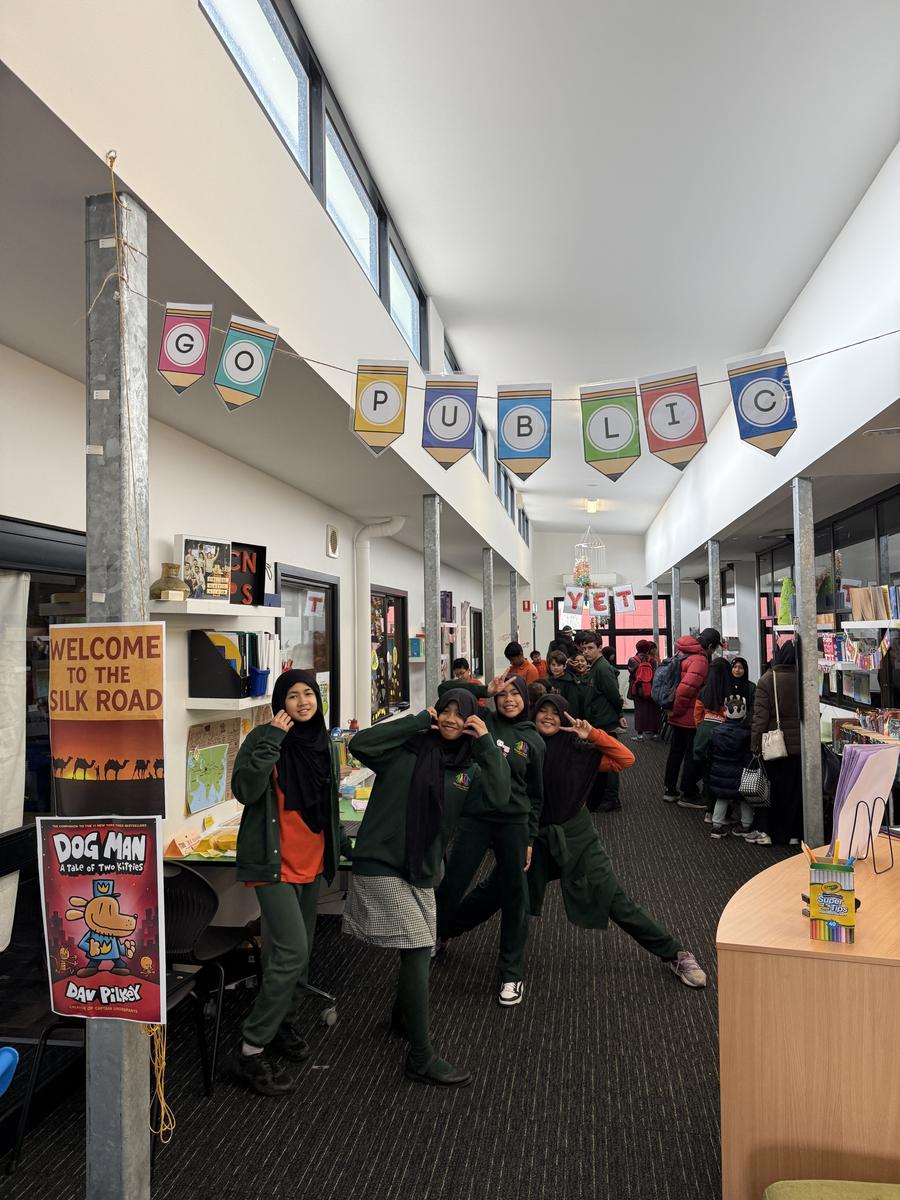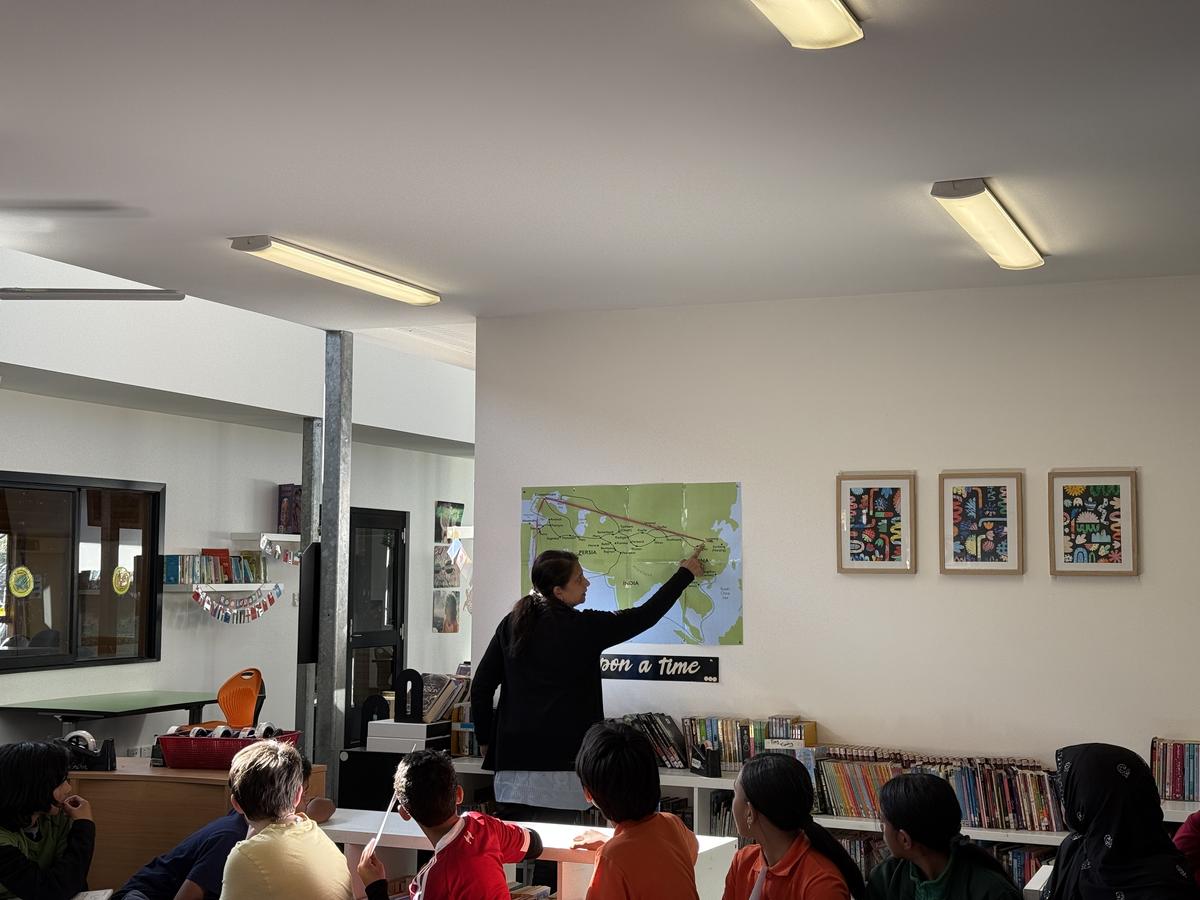Year 5/6 News
Radhika and Precious

Year 5/6 News
Radhika and Precious
In Spelling and Grammar, we have been learning about homophones and puns. Homophones are words that sound the same but are spelt differently and have different meanings. A pun is a form of wordplay where homophones (and sometimes other words) are used to create a double meaning. We discovered how important homophones are in shaping puns, for example, flour and flower. Students also had fun creating their own puns and exploring examples to see how wordplay can make language more engaging and humorous.
- Saarah Zaman, Year 5
We borded the bus to South Oakleigh College at 1pm. When we arrived, we sat with other schools while waiting for the performance to begin. As we entered the theatre, the first thing I noticed was a throne already set up on the stage. Soon after, the lights dimmed and the performance began. The whole play lasted about two hours, and it was absolutely amazing to watch, even though it was only a dress rehearsal. The acting, singing, and costumes made the story come alive. When we returned to school, everything else that day felt a little dull in comparison to the excursion.
- Gio Rahman, Year 6
On Saturday, members of our Year 5/6 team attended the Victorian State Schools Spectacular with our families, and we now see why it’s called spectacular. More than 3,000 primary students danced in stunning synchrony while talented vocalists performed alongside a 75-piece live orchestra, with dazzling lights, costumes and circus elements. It was the culmination of eight months of hard work where every young voice was heard. We are incredibly proud of our CNPS performers—their commitment, courage and joy shone on stage. Thank you to Jenny for guiding the students and coordinating this opportunity for the second consecutive year, and to families for their ongoing support.
On Air reminded us of the power of the arts: dreams take flight, friendships grow, and confidence soars.
On Wednesday, the 10th of September, the Year 5/6s held Go Public. Students brought or made artifacts and items such as spices, cinnamon, and salt rocks to display at the school. Teachers, parents, and students all had their turn visiting the 5/6 building and looking at our projects about the Silk Road. We were split into groups of four or five, with each group having their own table. We presented our Silk Road maps, 3D shape models, food stall budgeting posters, Silk Road presentations, and even a Dog Man Venn diagram. We found Go Public extremely exciting as we had practiced and worked hard to prepare our Canva slides, create artifacts, and set up our tables.
- Khadijah Abdulsalam, Naura Tabina, Amika Rymbai, Year 5/6


We created a presentation of all our work across subjects, in particular, our Inquiry topic, the Silk Road. We took some time to produce high-quality work, and divided our roles in explaining our presentations. We mainly worked on Canva and the artifacts to attract the Prep students to visit our display. We also printed our fact file book about the countries that were part of the Silk Road. In the book, we explained what each country traded. For example, Saudi Arabia traded precious stones, pearls, leather, ebony, and many other items to Persia, and in return they received goods such as spices, nuts, and pistachios. We also included information about the first flag of each country, who started the Silk Road, and we added questions to make it more interesting and to help the audience gain knowledge.
- Ibrahim Alfaruq, Year 5


In Math, we were learning about angles, including their different types, how to measure and estimate them. First, we started by creating our own protractors. We took a semi-circle piece of paper, and using a real protractor, we measured it until we reached 180 degrees. It was harder than I thought it would be! Next, we learned about the different types of angles.
We also learned about complementary, supplementary, and vertical angles. Complementary angles are when two angles add up to 90 degrees. Supplementary angles are when two angles add up to 180 degrees. Vertical angles were a bit hard for me to understand. They are the angles that are opposite each other when two lines cross, and they are always equal.
- Mahdiya Hasan, Year 5
Have you ever heard about the Silk Road? Well, for your information, the Silk Road was a vast ancient network used for exchanging goods, ideas, and cultures between Asia, the Middle East, and Europe. It lasted for approximately 1,500 years, and it has been the focus of our learning in 5/6. The Silk Road involved producers, consumers, and merchants, each with specific roles. People often traveled in groups called caravans, using camels because they were known as the "ships of the desert." From camels and bandits to consumers and producers, the Silk Road has always been a fascinating topic filled with stories, facts, and even mysteries still unanswered, like how exactly it began and how it eventually ended. Learning about the Silk Road also teaches us the importance of communities: that it doesn’t matter where you are from, people are always connected through trade, ideas, and culture. So, if you’re interested in this topic, then you’ll definitely enjoy the other things we learn in 5/6!
-Hashim Altayeb, Year 5


Spring is in the air and with it the fruits and flowers are blooming. The garden has started flourishing and many fruits are starting to grow. The cherry blossom outside the Japanese room has started to curl around the stairs and flower in a beautiful pinkish hue. The winter, autumn vegetables, and fruits will soon fall, but sweeter fruits will soon take their place. The cherry tree will soon grow many plump red cherries that will be shared among the grade levels. The Year 6 environment captains have also been busy in the garden, helping to care for the plants, weeding, watering, and keeping everything tidy.
- Joshua Buxey, Year 6